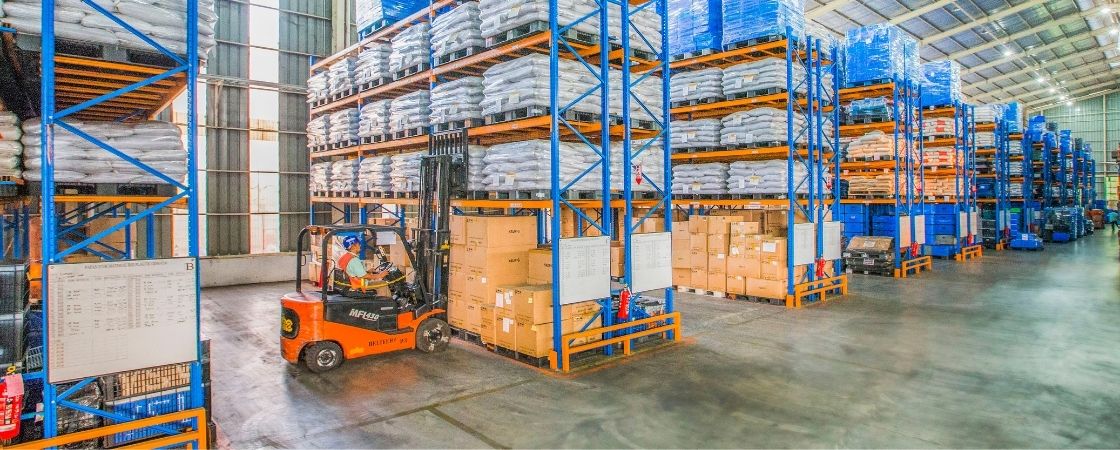
Innovative Approaches to Tackle the Textile Waste Problems
October 17, 2023
What Does Successful Supply Chain Risk Management Look Like?
November 9, 2023One of the prominent components of ready-to-wear is textile logistics. It includes from the supply and storage of the raw material required for the production of a product to the stages of the transportation and delivery of the product to the customer. These stages are very important because the disruption in one is reflected in the whole logistic and production process and causes a huge cost. Effective and well-managed textile logistics provide many advantages, from customer satisfaction to reduced costs. It is important to manage this process for the reputation of the brand to be not damaged and for everything to be done on time. For this reason, understanding the logistics process, its importance, and its challenges are important to being successful.
What Is Textile Logistics?
Textile logistics is one of the most important components of ready-to-wear and is a process to consider well. It covers all kinds of logistics processes from the production stage of textile products to the supply stage. All sorts of activities such as the production, storage, transportation, and distribution of products are within textile logistics. It is a fundamental process for businesses because the product, information, and service flow are managed in this way. Since the transportation of textile products is done systematically, it takes place more easily and smoothly. For this reason, it is necessary to pay attention to logistics in order to be more efficient and successful in the ready-to-wear industry.
What Are the Types of Textile Logistics?
There are two prominent types of textile logistics, these are inbound and external logistics. Both are very important and include the activities required for the proper functioning of logistics. Both types need to be learned well to complete the smooth supply process and distribution of products in the textile industry.
1. Inbound Logistics
Inbound logistics is a type of logistics where raw materials required for production are supplied, transported, stored, and managed. Since it is a necessary process for the continuation of production, the complete supply of materials such as fabric, yarn, and chemicals are very important at this stage.
2. External Logistics
External logistics is kind of like the continuation of inbound logistics. At this stage, the products have already been produced and include the stages from which they were taken from the production facility. Produced textile products are taken and delivered to customers. External logistics is very important in this logistics because products must be delivered to the right place at the right time. Delivery points should be determined correctly and delivered to customers at the desired time, so an effective distribution network and management are needed.
The Importance of Textile Logistics
Textile logistics is of great importance in the textile industry because it includes the processes of transporting, storing, and distributing products. An effective and well-managed logistics is also effective in cost reduction. Logistics includes processes such as the supply, storage and subsequent transportation and distribution of raw materials required for the textile product. One of the reasons why this process is important is that timely delivery is a must in the textile industry. Failure to deliver or store raw materials on time causes production disruptions. Similarly, problems arise if the products are not delivered to the customer on time or delivered to the wrong place. Due to these, different transport methods, roads and storage techniques should be determined in advance and the process should be managed well. These logistics companies determine how to transport and store the product in the best and most efficient way, so it is easier to save costs. For different reasons such as this, logistics has become an important process in textiles.
What are the Benefits of Textile Logistics?
Textile logistics is a useful process in many ways. Effective logistics makes it easy to supply raw materials on time and deliver products to the customer on time. Thus, the process continues without disruption and everyone is satisfied. Customer satisfaction is very important because customers rely on suppliers that deliver on time, and this is positively reflected in the brand’s reputation. In addition, this logistics makes it easier to control the stock of the products. Information such as required storage and stock information is checked and both the customer and the supplier are prevented from possible problems. In addition, controlling stocks and doing logistics well are among the factors that reduce costs.
Challenges of Textile Logistics
No matter how useful textile logistics is, it is quite difficult to manage the process completely. Logistics brings with it a number of different problems, and it is very important to solve each. The logistics processes that are strong to coordinate and effectively manage the process are companies that have been able to overcome these challenges. The most common challenges based on logistics in the textile industry are as follows.
1. Supply Chain Visibility
Supply chain visibility is one of the major challenges in this logistics. It includes access to detailed information at every stage of the transportation process. As with any industry, there are uncertainties and frequent changes in textiles. For this reason, managing this process can be quite complicated. When the supply chain lacks visibility, production is disrupted, cost increases and customer satisfaction decreases. For these reasons, it is important to identify the risks and complete all needs in order to manage the process completely. Also, necessary technological tools, systems, and appropriate planning are required.
2. Inventory Management
In the textile industry, stock is often available to meet demand and be prepared. Although this situation is beneficial, it can cause some problems. In cases such as incorrect storage or excess stock retention, the customer’s request may not be met on time and the storage cost may increase. In order to avoid this situation, the inventory management needs to be done well.
3. Production Planning and Scheduling
Good planning is one of the biggest factors that facilitate the logistics process, that’s why production planning and scheduling are very important. This planning process includes production to meet demand and organizational processes such as the supply of raw materials needed for production. Even if everything is done completely, the change in demand, the problems that arise in the supply of raw materials, and possible disruptions in production can cause major problems. In addition, misconduct planning may result in incomplete or incorrect production and disruption of delivery. Poorly made planning has a huge impact on increasing costs and disrupting production. For this reason, being prepared for possible situations, and developing an effective and flexible strategy is important for the uninterrupted fashion flow.




